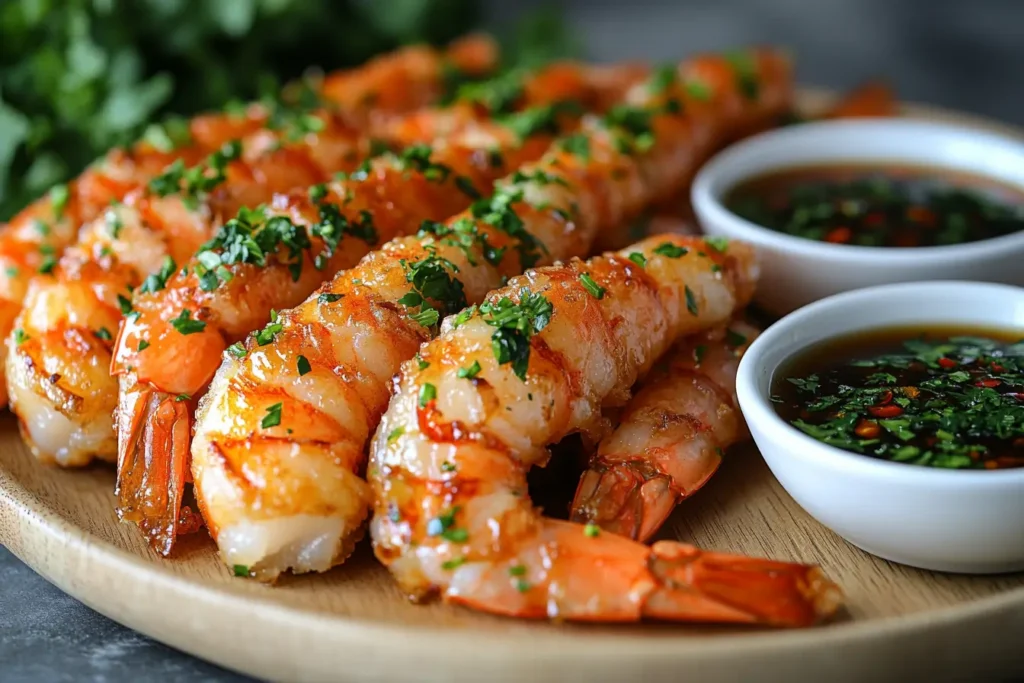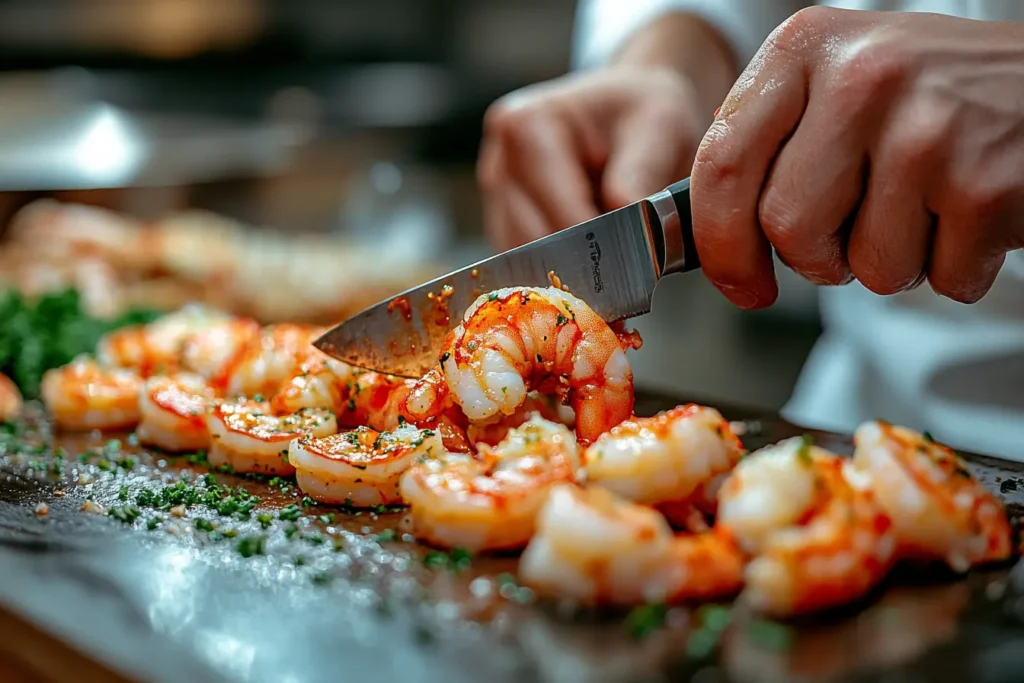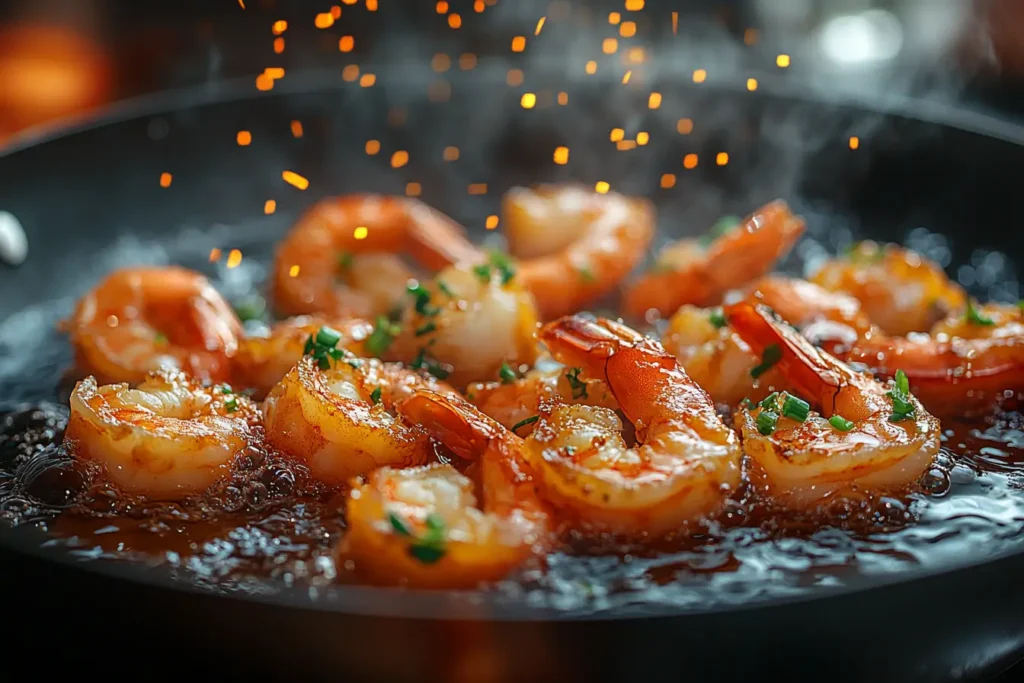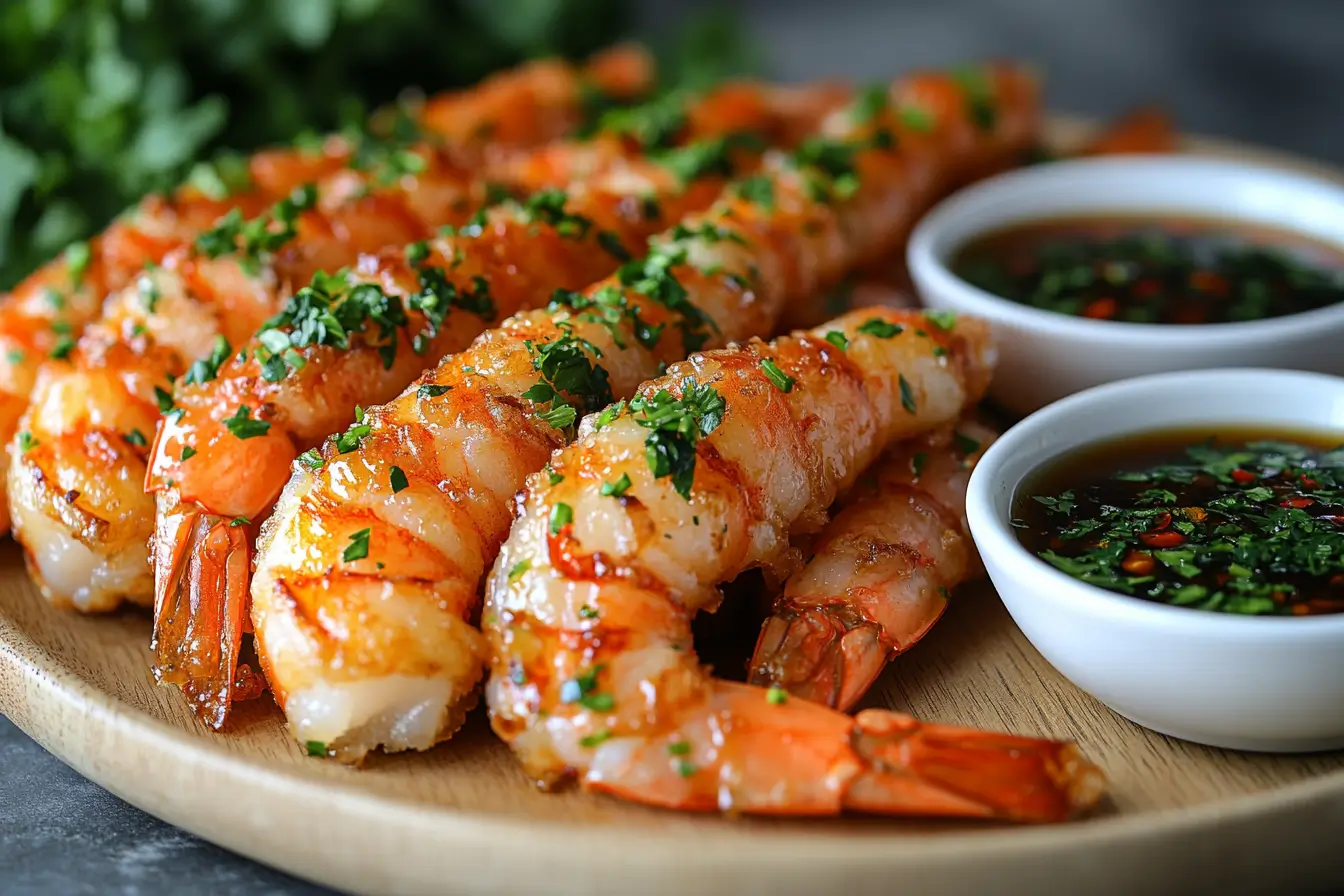
Tempura shrimp is a dish that’s both simple and elegant. But have you ever noticed how perfectly straight those restaurant-quality shrimp look? If you’ve tried making tempura at home, you might have been frustrated by your shrimp curling up like little commas. Don’t worry—you’re not alone! In this guide, I’ll walk you through how to straighten shrimp for tempura like a pro. Whether you’re a home chef or just experimenting in the kitchen, you’ll soon have those picture-perfect tempura shrimp ready to impress.
Introduction to Shrimp Preparation for Tempura
Cooking the perfect tempura shrimp requires attention to detail, and one of the most important steps is keeping your shrimp straight for tempura. Straight shrimp not only look professional but also cook more evenly, ensuring a crispy batter and tender bite every time. If you’ve ever struggled with shrimp curling during frying, this guide will walk you through the step-by-step process to achieve flawless, restaurant-quality results.
The Importance of Straight Shrimp in Tempura
Why go through the trouble of straightening shrimp? Well, it’s not just for looks! Straight shrimp cook more evenly, ensuring that every bite is juicy and tender. Curled shrimp can lead to uneven batter coverage, which means some parts of the shrimp might not cook as well as others. And let’s face it, when you’re making a dish as iconic as tempura shrimp, presentation matters. After all, we eat with our eyes first! 🍤✨
Common Challenges with Preparing Tempura Shrimp
Let’s address the elephant—or should I say, shrimp—in the room. Why do shrimp curl in the first place? The answer lies in their anatomy. Shrimp have muscles along their bellies that contract when exposed to heat, causing the curling effect. Without the right preparation, even the freshest shrimp will curl up like a scared cat. But don’t worry; once you understand how to tackle this, the process becomes a breeze.
Understanding the Structure of Shrimp
Before we dive into the hands-on part, let’s get to know our main ingredient a little better. Understanding why shrimp behave the way they do when cooked will help you prevent curling and achieve that enviable straightness.
Why Shrimp Curl: Anatomy Explained
Shrimp are fascinating little creatures. Along their underside, they have segmented exoskeletons and strong muscles that naturally contract when exposed to heat. Think of it like a spring—when the shrimp is heated, it automatically tightens up. Without intervention, this curling is inevitable.
Key Factors That Cause Shrimp to Curl During Cooking
Curling doesn’t just happen because of the heat. Sometimes, improperly handled shrimp will curl no matter what. Here are a few culprits:
- Shrimp Size: Larger shrimp tend to curl less, but they still need some preparation.
- Lack of Incisions: Without specific cuts (more on this later), the shrimp’s muscles will contract uncontrollably.
- Overcooking: Even perfectly prepared shrimp will curl if left on the heat too long. Timing is everything!
“Curling shrimp can feel like they’re rebelling, but once you understand their anatomy, you’ll see they’re just following nature’s rules.”
Essential Tools and Ingredients Needed
Straightening shrimp is not rocket science, but having the right tools and ingredients will make the process smoother. Here’s what you’ll need to get started.
Tools to Prepare Shrimp for Tempura
- Sharp Knife: A small, sharp knife is essential for making precise incisions.
- Cutting Board: Choose a sturdy, non-slip board for safe preparation.
- Skewers (Optional): Bamboo or metal skewers can help keep shrimp straight during cooking.
- Tweezers (Optional): Useful for removing veins or stubborn shell pieces.
Choosing the Right Shrimp for Tempura
When it comes to tempura, not all shrimp are created equal. Here’s what to look for:
- Size: Medium to large shrimp (like 16/20 count) are ideal for tempura.
- Freshness: Fresh shrimp hold their shape better than frozen, though frozen shrimp can work in a pinch.
- Peeled but Tail-On: The tail serves as a convenient handle and adds to the dish’s visual appeal.
Essential Ingredients for Tempura Batter
While our focus is on straightening shrimp, it doesn’t hurt to keep an eye on the big picture. A perfect tempura batter is:
- Light and Airy: Use ice-cold water to prevent gluten formation.
- Simple: Stick to basic ingredients like flour, cornstarch, and baking soda.
- Delicate: Overmixing is your enemy—aim for a slightly lumpy batter.
“A good tempura batter should feel like clouds—light, fluffy, and almost weightless.”
Step-by-Step Process – Shrimp Straight for Tempura
Now, the fun part! Here’s a simple, foolproof guide to straightening shrimp.
Step 1: Cleaning and Deveining Shrimp
Start by cleaning the shrimp thoroughly. Rinse them under cold water and remove the shells, leaving the tails intact. Next, use a knife to make a shallow cut along the back of the shrimp and gently pull out the vein. This not only improves the shrimp’s appearance but also enhances the taste.
Step 2: Making Incisions to Prevent Curling

Here’s the secret sauce for shrimp straight for tempura: small, strategic incisions. First, lay the shrimp flat on the cutting board, belly-side up. Next, take a sharp knife and make 3-4 shallow cuts along the belly. However, be careful not to cut all the way through! These small cuts are critical because they break up the muscle segments, which would otherwise contract during cooking and cause the shrimp to curl.
Additionally, as you make these incisions, take your time to ensure the cuts are evenly spaced. This not only helps maintain a uniform shape but also makes the shrimp easier to stretch later. Furthermore, using a consistent technique reduces the risk of overcutting, which could weaken the shrimp and impact its appearance.
By following this step carefully, you’ll set the stage for perfectly straight shrimp for tempura. While this process may seem tedious at first, it’s absolutely worth the effort to achieve professional-quality results. After all, great tempura begins with mastering the small details, doesn’t it? 😊
Step 3: Gently Stretching the Shrimp
Once the incisions are made, hold the shrimp at both ends and gently stretch it. You might hear or feel a soft “pop” as the muscles release tension. Don’t overdo it—just enough to make the shrimp lay flat.
Step 4: Using Skewers for Extra Precision
For ultimate straightness, you can thread the shrimp onto a skewer. This isn’t strictly necessary, but it’s a great trick if you’re aiming for perfection or preparing shrimp in bulk.
Common Mistakes and How to Avoid Them
No matter how many times you’ve cooked shrimp, there are always opportunities for something to go sideways—pun intended. Let’s talk about some common mistakes people make when trying to straighten shrimp for tempura and, more importantly, how to avoid them. After all, nobody wants to spend all that effort prepping shrimp only to have them curl up anyway.
Overcutting the Shrimp: How to Fix It
One of the most common pitfalls when straightening shrimp is cutting too deep into the belly. Overcutting can weaken the structure of the shrimp, causing it to fall apart during cooking.
How to Avoid:
- Use a sharp knife to make shallow, controlled cuts.
- Pay attention to pressure—light incisions are all you need.
- Practice makes perfect. If the shrimp looks like it’s about to split, stop and reassess.
How to Fix:
If you’ve overcut the shrimp, don’t panic! You can use a skewer to hold it together while frying or opt to cook it gently in a batter-heavy coat. While it may not look perfect, it will still taste amazing.
“Remember, shrimp prep is like sculpting—slow and steady wins the race!”
Uneven Cooking and Shrimp Curling: Solutions
Even if you’ve prepped the shrimp correctly, curling can still happen during cooking if the batter isn’t applied evenly or the heat is inconsistent.
How to Avoid:
- Make sure your oil is heated to the right temperature—around 350–375°F (175–190°C).
- Coat the shrimp evenly with batter to provide structural support.
- Fry shrimp in small batches to maintain consistent oil temperature.
Pro Tip:
If you notice curling starting while frying, gently press the shrimp flat with tongs for a second or two. This can help straighten it out before the batter fully sets.
Troubleshooting Shrimp Preparation Issues
Even the best cooks have moments where things go wrong. That’s the beauty of learning! Let’s address some common troubleshooting questions.
Why Do My Shrimp Still Curl After Following the Steps?
So, you’ve cleaned, cut, stretched, and even skewered your shrimp, but they still won’t stay straight? Here are a few reasons why:
- Not Enough Incisions: Make sure you’re cutting into the belly at regular intervals.
- Overcooking: Too much time in the fryer can undo all your hard work.
- Shrimp Size: Smaller shrimp are harder to straighten because they have tighter muscles.
Quick Fix:
Double-check your cuts and try skewering the shrimp for added support. If you’re still having trouble, practice on a larger shrimp size. They’re more forgiving.
How to Adjust Cooking Techniques for Better Results
Cooking shrimp is a dance between time and temperature. If you’re not getting the results you want, tweak your frying method:
- Oil Too Hot? Lower the temperature slightly to prevent the shrimp from curling too quickly.
- Oil Too Cool? Make sure the oil is properly preheated to crisp up the batter instantly.
- Timing Issues? Shrimp should cook for about 2–3 minutes. Keep a close eye to avoid overcooking.
“Cooking is all about balance—too much heat, and you’ve got a curl; too little, and it’s soggy city.”
Tips for Perfect Tempura Shrimp Every Time

Let’s move from troubleshooting to mastering the art of tempura shrimp. These tips will help you achieve perfection, whether it’s your first try or your fiftieth.
Techniques for Achieving the Ideal Batter Coating
A great batter is like a suit of armor for your shrimp—it protects, enhances, and ensures everything cooks evenly.
Pro Tips:
- Use Ice-Cold Water: This keeps the batter light and prevents the gluten from developing.
- Don’t Overmix: Lumps are your friends! They help create that signature crispy texture.
- Dip Quickly: Coat the shrimp evenly but avoid overloading it with batter.
How to Pair Shrimp Tempura with Dipping Sauces
No dish featuring shrimp straight for tempura is complete without a delicious dipping sauce to enhance its flavors. In fact, pairing the right sauce with your crispy, perfectly straight tempura can elevate it from simply good to truly unforgettable. To help you take your dish to the next level, here are some classic options to try:
- Tentsuyu Sauce: This light, soy-based dipping sauce is a traditional favorite. It includes a hint of dashi and mirin, which together create a balanced, savory flavor profile that perfectly complements the fried shrimp.
- Spicy Mayo: For those who enjoy a little kick, this creamy and zesty blend of mayo and sriracha is a must-try. Not only does it add a touch of heat, but it also brings out the richness of the shrimp, creating a delightful contrast.
- Ponzu: This citrusy soy sauce is ideal for balancing the richness of fried shrimp with a refreshing tang. Moreover, its bright and tangy notes make it an excellent choice for those who prefer lighter flavors.
Including the right sauce for your shrimp straight for tempura makes the dish even more satisfying, offering a harmonious blend of flavors and textures that you and your guests will love. 😊
Alternative Methods – Shrimp Straight for Tempura
If you’re ready to get creative or want to explore non-traditional methods, there are a few alternatives worth trying. These can be fun experiments and may even save you some time.
Using Special Cooking Rigs or Tools
If you’re serious about Shrimp Straight for Tempura and plan to make it often, consider investing in a shrimp straightener. These handy tools are designed specifically to hold shrimp in place during cooking.
Pros:
- Quick and easy to use.
- Ensures consistent results every time.
Cons:
- Not necessary for casual cooks.
- Can be hard to find in regular stores.
Comparison: Traditional vs. Modern Techniques
The traditional method (incisions and stretching) works well for most home cooks, but modern tools and techniques offer convenience and precision. Which is better? It depends on your priorities:
- Traditional: Affordable, accessible, and versatile.
- Modern: Time-saving and perfect for large quantities.
FAQs About Making Shrimp Straight for Tempura
Still have questions? Here are some answers to common concerns about shrimp prep.
Can Frozen Shrimp Be Used for Tempura?
Yes! Frozen shrimp can work just as well as fresh, provided they’re thawed properly. Make sure to pat them dry before prepping to avoid excess moisture in the batter.
What Size of Shrimp Works Best for Tempura?
Medium to large shrimp (16/20 count) are ideal. They’re big enough to hold their shape but still cook quickly and evenly.
Conclusion: Mastering Shrimp Preparation for Perfect Tempura
After all the effort you’ve put into preparing shrimp straight for tempura and crafting a delicious batter, you’re now armed with everything you need to create perfect tempura shrimp. The secret lies in attention to detail—from cleaning and deveining to making those essential belly incisions that ensure the shrimp remain straight during cooking. And remember, the right tools, batter, and frying technique are your best friends on this journey to achieving crispy, golden perfection.
By mastering these steps, you’ll not only elevate your cooking skills but also impress everyone with your restaurant-quality shrimp tempura. 😊
For more insight into what goes into shrimp tempura, check out What is Shrimp Tempura Made Of?. It’s a great companion to understanding the dish’s essence and how straight shrimp enhance its presentation and flavor.
Final Tips for Success
Still curious about shrimp tails? Leaving them intact isn’t just about aesthetics; they add a unique crunch and act as natural handles for dipping. Learn more about this in Can You Eat Fried Shrimp Tails?.
If you’re ready to take your shrimp game to the next level, why not explore a comprehensive Tempura Shrimp Recipe? It’s the perfect way to bring everything we’ve covered to life in your kitchen.
For a fun comparison between different shrimp preparations, check out Fried Shrimp vs. Tempura Shrimp. You’ll see why mastering straight shrimp is the key to elevating your tempura game!

